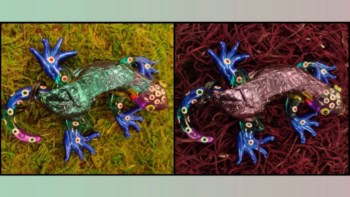One of the holy grails in optical fibre research is to develop a fibre that is so transparent that it works at the so-called clarity limit. Most of the silica fibres used today are contaminated with water that absorbs light in the infrared region, thereby reducing the transmission efficiency of the fibre. Now Gordon Thomas of Bell Laboratories in the US and colleagues have discovered how water gets into the fibre and developed a new fibre-pulling process that can make fibres close to the clarity limit (Nature 404 262).
Thomas’s group measured the spatial distribution of water in the glass rods from which the optical fibres are drawn. They discovered that water diffuses into the molten, flowing glass much faster than expected. The water comes from the oxygen/hydrogen torch used to heat the glass rods before pulling them into fibres. By using an oxygen plasma torch instead, they and another Bell labs team were able to overcome all the related technical difficulties, and eliminate water from the fibres.
Thomas points out that he encountered the problem of water in fibres by accident. “Bill Reed, a friend of mine at Bell Labs, mentioned the problem to me over coffee,” he says. “I believe he said something like ‘this is really important! People have been working on this for years.'” He has since patented his new technique.



